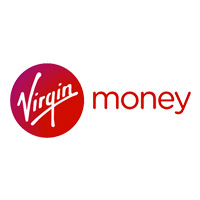Key Takeaways
-
Definition and Purpose: Demand Gen campaigns are a new Google Ads format designed to reach users who are not actively searching but are open to discovery. They are Google’s answer to social media advertising, aiming to close the gap between capturing existing demand (Search) and creating new demand (Social).
-
Placements: These campaigns deliver visually rich, interest-based ads across a discovery-focused ecosystem: YouTube In Feed, YouTube Shorts, Discover Feed, and Gmail Promotions tab.
-
Key Features:
-
Visual-First Formats: Emphasis on image-driven and video-driven creatives that resemble social media ads.
-
Advanced Audiences: Targeting uses a combination of first-party data, lookalike segments, interests, and website visitors.
-
AI-Powered Optimisation: Google’s machine learning automatically adjusts creatives, audiences, placements, and bidding strategies to improve performance over time.
-
-
When to Use: Demand Gen is most effective for brand awareness, product introductions, visual storytelling, and re-engagement of warm audiences, as the goal is to influence future search behaviour.
-
Optimisation Best Practices:
-
High-Quality Creative: Prioritise strong lifestyle images and short-form video, refreshing creatives regularly to prevent fatigue.
-
Segmentation and Bidding: Test multiple audience segments and use value-based bidding strategies like Maximise Conversions or Target ROAS.
-
Track Micro Conversions: Track upper-funnel metrics like time on site, add-to-cart, and sign-ups to help the algorithm optimise effectively.
-
-
Comparison: Demand Gen replaces the older Discovery campaigns with improved features, offering broader reach than traditional social ads but focusing on intent signals rather than community engagement.
Google has introduced Demand Gen campaigns as a powerful new advertising format designed to compete directly with social media platforms. These campaigns focus on reaching users earlier in the buyer journey by delivering visually rich, interest-based ads across Google surfaces. For brands looking to expand awareness and unlock new audiences, Demand Gen offers a fresh alternative to traditional search-focused campaigns.
This guide explains what Demand Gen campaigns are, why Google created them, and how to use them effectively.
What Are Demand Gen Campaigns?
Demand Gen campaigns are Google Ads campaigns designed to reach users who are not actively searching but are open to discovering new products, services, or brands. They combine Google’s audience signals with visually engaging ad formats to drive interest and consideration.
Demand Gen campaigns appear across:
- YouTube In Feed
- YouTube Shorts
- Discover Feed
- Gmail Promotions tab
This makes them ideal for brands that want to reach users in a more social style environment.
Why Google Created Demand Gen Campaigns
Search campaigns capture existing demand. Social media advertising creates demand. Google introduced Demand Gen to close this gap and compete with platforms like Facebook, Instagram, TikTok, and Snapchat.
Demand Gen brings:
- Stronger visual formats
- Better audience targeting
- AI driven creative optimisation
- Broader reach across Google properties
It offers advertisers a way to influence users earlier in the funnel while still benefiting from Google’s powerful machine learning.
Key Features of Demand Gen Campaigns
Visual First Ad Formats
Demand Gen emphasises rich, image driven and video driven creative that resembles social media ads.
Custom Audiences
You can target users using:
- First party data
- Lookalike style segments
- Interests and behaviours
- Website visitors
- YouTube viewers
Multiple Placement Types
Ads appear on Google surfaces where users browse content rather than search for it.
AI Powered Optimisation
Google’s systems automatically test and adjust:
- Creatives
- Audiences
- Placements
- Bidding strategies
This improves performance over time.
When to Use Demand Gen Campaigns
Demand Gen is particularly effective for:
- Brand awareness
- Product introductions
- Re engagement of warm audiences
- Driving website visits from discovery channels
- Visual storytelling and lifestyle focused messaging
If your goal is to influence future search behaviour, Demand Gen is a strong option.
How Demand Gen Compares to Discovery and Social Ads
Compared to Discovery Ads
Demand Gen replaces Discovery campaigns with more advanced targeting, better creative testing, and improved reporting.
Compared to Social Ads
Demand Gen offers:
- Wider reach across Google
- Access to YouTube and Shorts traffic
- More reliable intent-based targeting
- AI-based bidding with stronger conversion models
Social ads still win on community engagement and creator integrations, but Google is closing the gap.
How to Optimise Demand Gen Campaigns
Use High Quality Creative
Visual impact matters. Prioritise:
- Strong lifestyle images
- Short form video
- Clear product value
- Minimal text
Build Multiple Audience Segments
Test combinations such as:
- Lookalike audiences
- YouTube viewers
- CRM lists
- Custom intent signals
Use Value Based Bidding
Google recommends bidding strategies such as:
- Maximise conversions
- Target CPA
- Target ROAS
Set Up Multiple Creative Variations
AI performs best when it has choices. Include:
- Short videos
- Vertical formats
- Square image sets
- Carousel style assets when available
Track Micro Conversions
Demand Gen excels in upper funnel engagement. Track:
- Time on site
- Scrolling depth
- Add to cart
- Sign ups
- Content views
These signals help the algorithm optimise more effectively.
Demand Gen Best Practices
Keep Messaging Simple and Visual
Users are browsing content, not searching. Focus on emotion and brand appeal.
Prioritise Video
YouTube and Shorts are core placements, so video dramatically improves performance.
Refresh Creatives Regularly
Avoid fatigue by updating your visuals frequently.
Use A B Testing
Test headlines, images, and video hooks to find what resonates.
Final Takeaway
Demand Gen campaigns allow advertisers to reach new audiences before they actively search. With strong creative, smart audience targeting, and AI driven optimisation, these campaigns can deliver social style impact backed by Google’s intent signals and reach.








